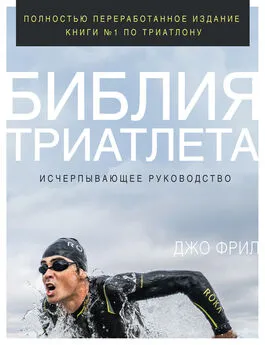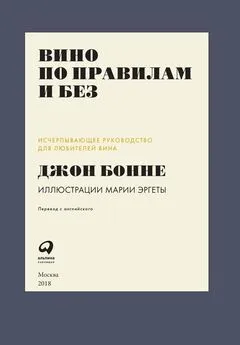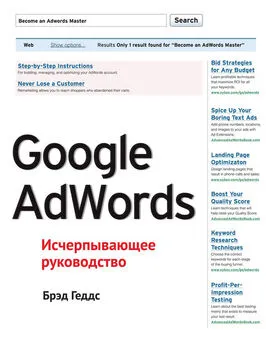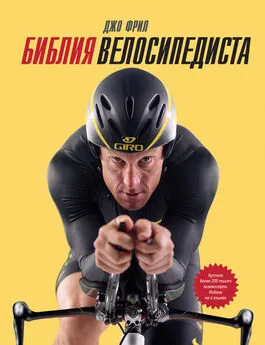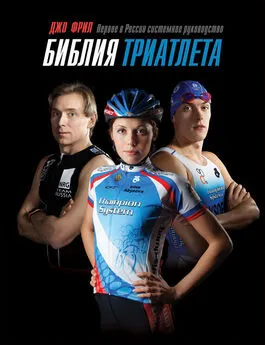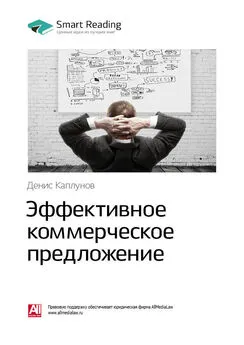Джо Фрил - Библия триатлета. Исчерпывающее руководство
- Название:Библия триатлета. Исчерпывающее руководство
- Автор:
- Жанр:
- Издательство:Литагент МИФ без БК
- Год:2018
- Город:Москва
- ISBN:978-5-00117-314-4
- Рейтинг:
- Избранное:Добавить в избранное
-
Отзывы:
-
Ваша оценка:
Джо Фрил - Библия триатлета. Исчерпывающее руководство краткое содержание
Книга обязательна к прочтению для триатлетов-любителей и профессионалов, а также тренеров по триатлону.
Библия триатлета. Исчерпывающее руководство - читать онлайн бесплатно ознакомительный отрывок
Интервал:
Закладка:
Как всегда, редактура и дизайн команды VeloPress помогли сделать книгу более приятной и легкой для восприятия. Спасибо Конни Эринг, Вики Хоупвелл и Барбаре Гормис. Благодарю также Чарли Лейтона, который преобразил мои грубые наброски в прекрасные рисунки, иллюстрирующие книгу. От всего сердца благодарю издателя Теда Константино, который побудил меня вновь изложить мысли на бумаге и оставался со мной, невзирая на то, что процесс затянулся более чем на полтора года.
Наконец, хочу поблагодарить свою жену Джойс, которая мирилась с моим ежедневным подъемом в четыре утра ради работы, когда я исследовал и записывал самые поразительные для себя вещи. Без ее поддержки, преданности и поощрения в эти более чем пятьдесят совместных лет я бы никогда не смог претворить свои мечты в жизнь.
Библиография
Blanchfield, A. W., J. Hardy, H. M. De Morree, W. Staiano, and S. M. Marcora. “Talking Yourself Out of Exhaustion: the Effects of Self-Talk on Endurance Performance”. Medicine and Science in Sports and Exercise (2014) 46 (5): 998–1007.
Casey, B. J., L. H. Somerville, I. H. Gotlib, O.Ayduk, N. T. Franklin, M. K. Askren, J. Jonides, M. G. Berman, N. L. Wilson, T. Teslovich, G. Glover, V. Zayas, W. Mischel, and Y. Shoda. “Behavioral and Neural Correlates of Delay of Gratification 40 Years Later”. Proceedings of the National Academy of Sciences of the United States of America (2011) 108 (36): 14998–15003.
Jones, G. “How the Best of the Best Get Better and Better”. Harvard Business Review (2008) 86 (6): 123–127, 142.
Zadow, E. K., N. Gordon, C. R. Abbiss, and J. J. Peifer. “Pacing, the Missing Piece of the Puzzle to High-Intensity Interval Training”. International Journal of Sports Medicine (2015) 36 (3): 215–219.
Bouchard, C., M. A. Sarzynski, T. K. Rice, W. E. Kraus, T. S. Church, Y. J. Sung, D. C. Rao, and T. Rankinen. “Genomic Predictors of Maximal Oxygen Uptake Response to Standardized Exercise Training Programs”. Journal of Applied Physiology (2010) 110 (5): 1160–1170.
Ericsson, K. A. “Training History, Deliberate Practice and Elite Sports Performance: An Analysis in Response to Tucker and Collins Review – What Makes Champions?” British Journal of Sports Medicine (2013) 47 (9): 533–535.
Lehmann, M. J., W. Lormes, A. Opitz-Gress, J. M. Steinacker, N. Netzer, C. Foster, and U. Gastman. “Training and Overtraining: An Overview and Experimental Results in Endurance Sports”. Journal of Sports Medicine and Physical Fitness (1997) 37 (1): 7–17.
Meeusen, R., D. Martine, C. Foster, A. Fry, M. Gleeson, D. Nieman, J. Raglin, G. Rietjens, J. Steinacker, A. Urhausen, European College of Sport Science, and American College of Sports Medicine. “Prevention, Diagnosis and Treatment of the Overtraining Syndrome: Joint Consensus Statement of the European College of Sport Science (ECSS) and the American College of Sports Medicine (ACSM)”. European Journal of Sport Science (2013) 13 (1): 1–24.
Bangsbo, J., T. P. Gunnarsson, J. Wendell, L. Nybo, and M. Homassen. “Reduced Volume and Increased Training Intensity Elevate Muscle Na+/K+{alpha}2-Subunit Expression as Well as Short- and Long-term Work Capacity in Humans”. Journal of Applied Physiology (2009) 107 (6): 1771–1780.
Bannister, E. W., R. H. Morton, and J. Fitz-Clarke. “Dose/Response Effects of Exercises Modeled from Training: Physical and Biochemical Measures”. Annals of Physiology and Anthropology (1992) 11 (3): 345–356. Borg, G. “Perceived Exertion as an Indicator of Somatic Stress”. Scandinavian Journal of Rehabilitation Medicine (1970) 2 (2): 92–98.
Brisswalter, J., P. Legros, and M. Durand. “Running Economy, Preferred Step Length Correlated to Body Dimensions in Elite Middle Distance Runners”. Journal of Sports Medicine and Physical Fitness (1996) 36 (1): 7–15.
Busso, T., R. Candan, and J. R. Lacour. “Fatigue and Fitness Modelled from the Effects of Training on Performance”. European Journal of Applied Physiology and Occupational Physiology (1994) 69 (1): 50–54.
Costill, D. L., R. Thomas, R. A. Roberts, D. D. Pascoe, C. P. Lambert, S. I. Barr, and W. J. Fink. “Adaptations to Swimming Training: Influence of Training Volume”. Medicine and Science in Sports and Exercise (1991) 23 (3): 371–377.
Ekblom, B., and A. N. Goldbarg. “The Influence of Physical Training and Other Factors on the Subjective Rating of Perceived Exertion”. Acta Physiologica Scandinavica (1971) 83 (3): 399–406.
Fitz-Clarke, J. R., R. H. Morton, and E. W.Banister. “Optimizing Athletic Performance by Influence Curves”. Journal of Applied Physiology (1991) 71 (3): 1151–1158.
Helgerud, J., K. Hoydal, E. Wang, T. Karlsen, P. Berg, M. Bjerkaas, T. Simonsen, C. Helgesen, N. Hjorth, R. Bach, and J. Hof. “Aerobic High-Intensity Intervals Improve VO 2max More than Moderate Training”. Medicine and Science in Sports and Exercise (2007) 39 (4): 665–671.
Kubukeli, Z. N., T. D. Noakes, and S. C. Dennis. “Training Techniques to Improve Endurance Exercise Performances”. Sports Medicine (2002) 32 (8): 489–509.
Laursen, P. B., and D. G. Jenkins. “The Scientific Basis for High-Intensity Interval Training: Optimizing Training Programmes and Maximising Performance in Highly Trained Endurance Athletes”. Sports Medicine (2002) 32 (1): 53–73.
Lehmann, M., H. Mann, V. Gastmann, J. Keul, D. Vetter, J. M. Steinacker, and D. Haussinger. “Unaccustomed High-Mileage vs Intensity Training-Related Changes in Performance and Serum Amino Acid Levels”. International Journal of Sports Medicine (1996) 17 (3): 187–192.
Lindsay, F. H., J. A. Hawley, K. H. Myburgh, H. H. Schomer, T. D. Noakes, and S. C. Dennis. “Improved Athletic Performance in Highly Trained Cyclists After Interval Training”. Medicine and Science in Sports and Exercise (1996) 28 (11): 1427–1434.
Midgley, A. W., L. R. McNaughton, and N. M. Wilkinson. “Is here an Optimal Training Intensity for Enhancing the Maximal Oxygen Uptake of Distance Runners?: Empirical Research Findings, Current Opinions, Physiological Rationale and Practical Recommendations”. Sports Medicine (2006) 36 (2): 117–132.
Millet, G. P., A. Lambert, B. Barbier, J. D. Rouillon, and R. B. Candan. “Modelling the Relationships Between Training, Anxiety, and Fatigue in Elite Athletes”. International Journal of Sports Medicine (2005) 26 (6): 492–498.
Morton, R. H. “Modeling Training and Overtraining”. Journal of Sports Sciences (1997) 15 (3): 335–340.
Morton, R. H., J. R. Fitz-Clarke, and E. W. Banister. “Modeling Human Performance in Running”. Journal of Applied Physiology (1990) 69 (3): 1171–1177.
Neal, C. M., A. M. Hunter, L. Brennan, A. O’Sullivan, D. L. Hamilton, G. DeVito, and S. D. Galloway. “Six Weeks of a Polarized Training Intensity Distribution Leads to Greater Physiological and Performance Adaptations than a Threshold Model in Trained Cyclists”. Journal of Applied Physiology (2013) 114 (4): 461–471.
Taha, T., and S. G. homas. “Systems Modelling of the Relationship Between Training and Performance”. Sports Medicine (2003) 33 (14): 1061–1073.
Tanaka, H. “Effects of Cross-Training. Transfer of Training Effects on VO 2max Between Cycling, Running and Swimming”. Sports Medicine (1994) 18 (5): 330–339.
Westgarth-Taylor, C., J. A. Hawley, S. Rickard, K.H. Myburgh, T. D. Noakes, and S. C. Dennis. “Metabolic and Performance Adaptations to Interval Training in Endurance-Trained Cyclists”. European Journal of Applied Physiology and Occupational Physiology (1997) 75 (4): 298–304.
Beneke, R., R. M. Leithauser, and Q. Ochentel. “Blood Lactate Diagnostics in Exercise Testing and Training”. International Journal of Sports Physiology and Performance 6 (1) (2011): 8–24.
Estave-Lanao, J., C. Foster, S. Seiler, and A. Lucia. “Impact of Training Intensity Distribution on Performance in Endurance Athletes”. Journal of Strength and Conditioning Research 21 (3) (2007): 943–949.
Estave-Lanao, J., A. F. San Juan, C. P. Earnest, C. Foster, and A. Lucia. “How Do Endurance Runners Actually Train? Relationship with Competition Performance”. Medicine and Science in Sports and Exercise (2005) 37 (3): 496–504.
Fiskerstrand, A., and S. Seiler. “Training and Performance Characteristics Among Norwegian International Rowers 1970–2001”. Scandinavian Journal of Medicine & Science in Sports (2004) 14 (5): 303–310.
Gaskill, S. E., R. C. Serfass, D. W. Bacharach, and J. M. Kelly. “Responses to Training in Cross-Country Skiers”. Medicine and Science in Sports and Exercise (1999) 31 (8): 1211–1217.
Helgerud, J., K. Hoydal, E. Wang, T. Karlsen, P. Berg, M. Bjerkaas, T. Simonsen, C. Helgesen, N. Hjorth, R. Bach, and J. Hof. “Aerobic High-Intensity Intervals Improve VO 2max More than Moderate Training”. Medicine and Science in Sports and Exercise (2007) 39 (4): 665–671.
Impellizzeri, F., A. Sassi, M. Rodriguez-Alonso, P. Mognoni, and S. Marcora. “Exercise Intensity During Of-Road Cycling Competitions”. Medicine and Science in Sports and Exercise (2002) 34 (11): 1808–1813.
Ingham, S. A., H. Carter, G. P. Whyte, and J. H. Doust. “Physiological and Performance Effects of Low-Versus Mixed-Intensity Rowing Training”. Medicine and Science in Sports and Exercise (2008) 40 (3): 579–584.
Ingham, S. A., B. W. Fudge, and J. S. Pringle. “Training Distribution, Physiological Profile, and Performance for a Male International 1500-M Runner”. International Journal of Sports Physiology and Performance (2012) 7 (2): 193–195.
Jacobs, I. “Blood Lactate: Implications for Training and Sports Performance”. Sports Medicine (1986) 3 (1): 10–25.
Laursen, P. B., and D. G. Jenkins. “The Scientific Basis for High-Intensity Interval Training: Optimizing Training Programmes and Maximising Performance in Highly Trained Endurance Athletes”. Sports Medicine (2002) 32 (1): 53–73.
Lehmann, M., H. Mann, V. Gastmann, J. Keul, D. Vetter, J. M. Stewacker, and D. Haussinger. “Unaccustomed High-Mileage vs. Intensity Training-Related Changes in Performance and Serum Amino Acid Levels”. International Journal of Sports Medicine (1996) 17 (3): 187–192.
Loftin, M., and B. Warren. “Comparison of a Simulated 16.1-km Time Trial, VO 2max and 302 Related Factors in Cyclists with Different Ventilatory Thresholds”. International Journal of Sports Medicine (1994) 15 (8): 498–503.
Midgley, A. W., L. R. McNaughton, and N. M. Wilkinson. “Is here an Optimal Training Intensity for Enhancing the Maximal Oxygen Uptake of Distance Runners?: Empirical Research Findings, Current Opinions, Physiological Rationale and Practical Recommendations”. Sports Medicine (2006) 36 (2): 117–132.
Читать дальшеИнтервал:
Закладка:
